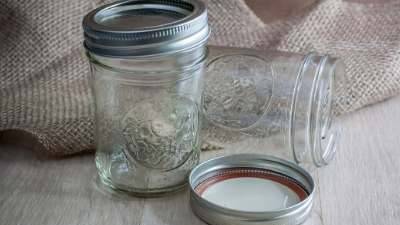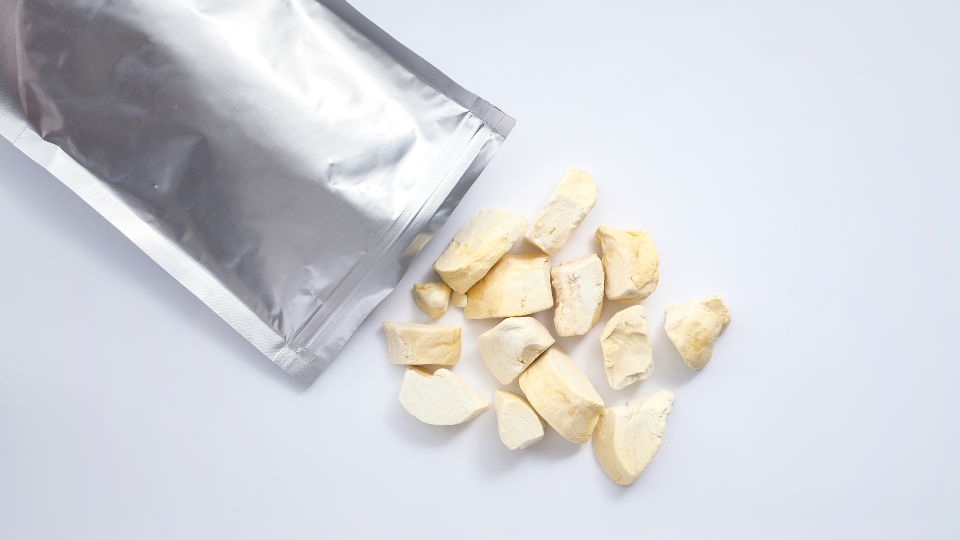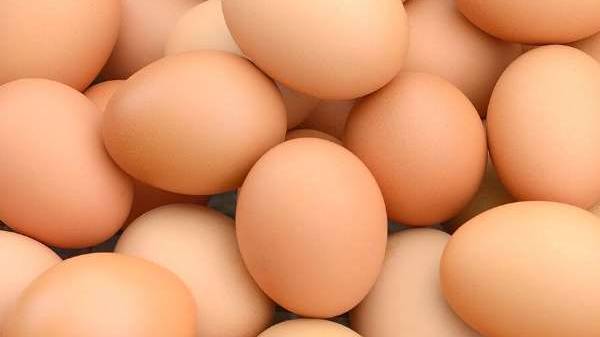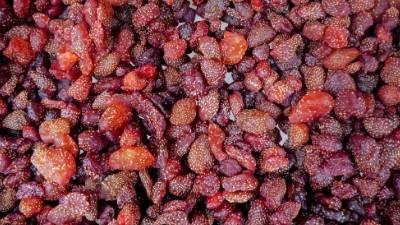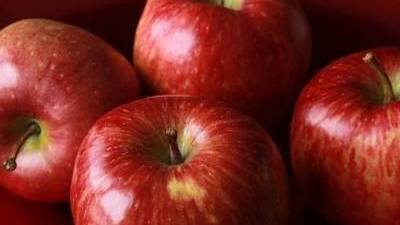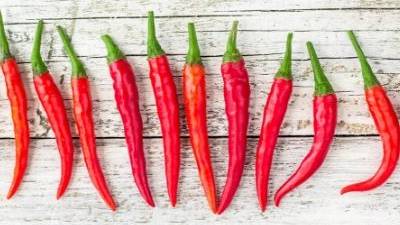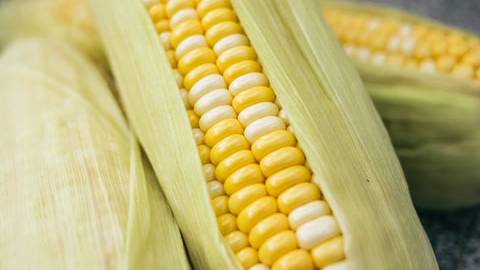How to Preserve Peaches

Did You Know?
The peach originated in China and has been cultivated there since 1000 B.C. In the Chinese culture the peach has mystical attributes and is said to bring luck, abundance and protection. Peach blossoms are carried by Chinese brides. Today, China is the largest producer of peaches in the world. (Celebrate National Peach Month, 2010)
Selection and Preparation of Peaches
The background color rather than the red blush is the key to selecting fresh peaches. The back-ground color should be yellow or cream rather than green. Although the red blush may look appealing, it won’t tell you if the peach is ripe or how it will taste. It should also be free from blemishes and have a fresh peachy odor. When peaches are ripe they will be soft to the touch.
To ripen firm peaches, place them in a brown paper bag that is loosely closed and allow them to stand at room temperature for 2 to 3 days. Once peaches are ripe they should be used or stored in the refrigerator.
To prevent browning while preparing peaches for freezing, canning, or dehydrating, place peaches in a solution of 1 teaspoon (3,000 mg) ascorbic acid to 1 gallon of cold water. Ascorbic acid is available in several forms:
- Pure powdered form - seasonally available among canners’ supplies in supermarkets. Onelevel teaspoon of pure powder weighs about 3,000 milligrams. Use 1 teaspoon per gallon ofwater as a treatment solution.
- Witamin C tablets - economical and available year-round. Buy 500-milligram tablets; crushand dissolve six tablets per gallon of water as a treatment solution.
- Commercial mixtures - sold to control fruit browning. These contain ascorbic acid and areavailable in supermarkets. Sometimes citric acid powder is sold in supermarkets, but is noteffective in controlling discoloration. Follow the manufacturer's directions when using theseproducts (Hunter and Carson, 2005).
Syrups
Preparing and Using Syrups
| Measures of Water and Sugar | ||||||
|---|---|---|---|---|---|---|
| For 9-pint Load* | For 7-Quart Load | |||||
| Syrup Type | Approximate % Sugar | Cups Water | Cups Sugar | Cups Water |
Cups Sugar | Fruits commonly packed in syrup** |
| Very Light | 10 | 6 1/2 | 3/4 | 10 1/2 | 1 1/4 | Approximates natural sugar level in most fruits and adds the fewest calories. |
| Light | 20 | 5 3/4 | 1 1/2 | 9 | 2 1/4 | Very sweet fruit. Try a small amount the first time to see if your family likes it. |
| Medium | 30 | 5 1/4 | 2 1/4 | 8 1/4 | 3 3/4 | Sweet apples, sweet cherries, berries, grapes. |
| Heavy** | 40 | 5 | 3 1/4 | 7 3/4 | 5 1/4 | Tart apples, apricots, sour cherries, gooseberries, nectarines, peaches, pears, plums. |
| Very Heavy | 50 | 4 1/4 | 4 1/4 | 6 1/2 | 6 3/4 | Very sour fruit. Try a small amount the first time to see if your family likes it. |
| Procedure: Heat water and sugar together. Bring to a boil and pour over raw fruits in jars. For hot packs, bring water and sugar to boil, add fruit, reheat to boil and fill jars immediately. | ||||||
Freezing Peaches
Preparation
Select well-ripened fruit and handle carefully to avoid bruising. Sort, wash and peel.
Syrup Pack
Use 40 percent syrup (see chart below). For a better quality product, add 1/2 teaspoon (1,500 mg) ascorbic acid per quart of syrup. Put peaches directly into cold syrup in container – starting with 1/2 cup syrup to a pint container. Press fruit down and add syrup to cover, leaving headspace (1/2 inch for pints, 1 inch for quarts). Place a small piece of crumpled water-resistant paper (freezer paper or waxed paper) on top to hold fruit down. Seal, label, and freeze.
*This amount is also adequate for a 4 quart load.
** Many fruits that are typically packed in heavy syrup are excellent and tasteful products whenpacked in lighter syrups. It is recommended that lighter syrups be tried, since they contain fewercalories from added sugar.
Note: Other sweeteners: Light corn syrups or mild-flavored honey may be used to replace up tohalf the granulated sugar called for in syrups.
Sugar Pack
To each quart (1 1/3 pounds) of prepared fruit add 2/3 cup sugar and mix well. Stir gently until sugar is dissolved or let stand for 15 minutes. To retard darkening, sprinkle ascorbic acid dissolved in water over the peaches before adding sugar. Use 1/4 teaspoon (750 mg) ascorbic acid in 3 tablespoons cold water to each quart of fruit. Pack into containers, leaving headspace (1/2 inch for pints, 1 inch for quarts). Seal, label, and freeze.
Crushed or Purée
Coarsely crush peeled and pitted peaches. For purée, press through a sieve or purée in a blender or food processor. (Heating pitted peaches for 4 minutes in just enough water to prevent scorching makes them easier to purée. For better quality, add 1/8 teaspoon (375 mg) ascorbic acid to each quart of fruit. Pack into containers. Leave headspace (1/2” for pints, 1” for quarts). Seal, label, and freeze. (Andress and Harrison, 2006)
Canning Peaches
Quantity
- 17-1/2 pounds of peaches will fill approximately 7 quart jars
- 11 pounds of peaches will fill approximately 9 pints
- A bushel weighs 48 pounds and yields 16 to 24 quarts
- An average of 2-1/2 pounds of fruit are needed per quart
Quality
Choose ripe mature fruit of ideal quality for eating fresh or cooking.
Procedure
Dip fruit in boiling water for 30-60 seconds until skins loosen. Dip quickly in cold water and slip off skins. Cut in half, remove pits and slice if desired. To prevent darkening, keep peeled fruit in ascorbic acid solution (see directions above). Prepare and boil a very light, light, or medium syrup (page 2). Apple juice, white grape juice, or water may also be used as the syrup in canning peaches. Hot packing produces the highest quality peaches, but peaches may also be raw packed.
Hot pack
In a large saucepan place drained fruit in syrup, juice or water and bring to boil. Fill jars with hot fruit and cooking liquid, leaving 1/2-inch headspace. Place halves in layers, cut side down.
Raw pack
Fill jars with raw fruit, cut side down, and add hot juice, syrup, or water, leaving 1/2-inch headspace.
Adjust lids and process using the processing times on the table below. Remember to use the processing time for local altitude (see chart below). Process either by boiling water bath or by pressure canning. (Kuhn, Andress, Dimick, 2009)
Canning Peach Nectar/Puree
Stem wash, drain, peel, and remove pits. Measure fruit into a large saucepan, crushing slightly if desired. Add 1 cup hot water for each quart of fruit. Cook slowly until fruit is soft, stirring frequently. Press through sieve or food mill. If desired, add sugar to taste. Return pulp to boil or heat until sugar dissolves. Fill clean jars, leaving 1/2 inch headspace. Adjust lids and process. Remember to use processing time for local altitudes (see chart below). Process in a boiling water canner or pressure canner. (Kuhn, Andress and Dimick, 2009)
Canning Peach Pie Filling
General
The following fruit filling is an excellent and safe product. Each canned quart makes one 8-inch to 9-inch pie. The filling may be used as a topping on dessert or pastries. Clear Jel® is a chemically modified corn starch that produces excellent sauce consistency even after fillings are canned and baked. Other available starches break down when used in these pie fillings, causing a runny sauce consistency. Clear Jel® is available only through a few supply outlets and is not currently available in grocery stores. Find out about its availability prior to gathering other ingredients to make this pie filling. If you cannot find it, ask your county Extension family and consumer sciences educator about sources for Clear Jel®. Choose regular or cooked Clear Jel rather than Instant Clear Jel® when canning pie fillings.
Because the variety of fruit may alter the flavor of the fruit pie, it is suggested that you first make a single quart of pie filling, make a pie with it, and serve. Then adjust the sugar and spices in the recipe to suit your personal preferences. The amount of lemon juice should not be altered as it aids in controlling the safety and storage stability of the pie filling.
Quality
Select ripe, but firm fresh peaches. \ Red Haven, Redskin, Sun High, and other varieties of similar quality are suitable.
Peach Pie Filling
Yield: 1 quart or 7 quarts
| Quantities of Ingredients Needed for: | ||
|---|---|---|
| 1Quart | 7 Quarts | |
| Sliced fresh peaches | 3 1/2 cups | 6 quarts |
| Granulated sugar | 1 cup | 7 cups |
| Clear Jel® | 1/4 cup + 1 tablespoon | 2 cups + 3 tablespoons |
| Cold water | 3/4 cup | 5 1/4 cups |
| Cinnamon (optional) | 1/8 teaspoon | 1 teaspoon |
| Almond extract (optional) | 1/8 teaspoon | 1 teaspoon |
| Bottled lemon juice | 1/4 cup | 1 3/4 cups |
Procedure
Peel peaches. To loosen skins, submerge peaches in boiling water for approximately 30-60 seconds, and then place in cold water for 20 seconds. Slip off skins and prepare slices 1/2-inch thick. Place slices in water containing 1 teaspoon of ascorbic acid crystals or six 500-milligram vitamin C tablets in 1 gallon water to prevent browning. For fresh fruit, place 6 cups at a time in 1 gallon boiling water. Boil each batch 1 minute after the water returns to a boil. Drain but keep heated fruit in a covered bowl or pot. Combine water, sugar, Clear Jel®, and, if desired, cinnamon and/or almond extract in a large kettle. Stir and cook over medium high heat until mixture thickens and begins to bubble. Add lemon juice and boil sauce 1 minute more, stirring constantly. Fold in drained peach slices and continue to heat mixture for 3 minutes. Fill hot jars without delay, leaving 1-inch headspace. Remove air bubbles and adjust headspace if needed. Wipe rims of jars with a dampened, clean paper towel. Adjust lids and process immediately. See the chart below for processing times. (Kuhn et al. 2009)
Recommended process time for peach products in a boiling - water canner
| Peach Halves or Slices | Process Time at Altitudes of | ||||
|---|---|---|---|---|---|
| Style of Pack | Jar Size | 0-1,000 ft. | 1,001-3,000 ft. | 3,001-6,000 ft. | Above 6,000 ft. |
| Hot | Pints | 20 min | 25 | 30 | 35 |
| Quarts | 25 | 30 | 35 | 40 | |
| Raw | Pints | 25 | 30 | 35 | 40 |
| Quarts | 30 | 35 | 40 | 45 | |
| Peach Purée/Nectar | |||||
| Hot | Pints or Quarts | 15min | 20 | 20 | 25 |
| Peach Pie Filling | |||||
| Hot | Pints or Quarts | 30min | 35 | 40 | 45 |
Processing times for peach products in a DIAL-GUAGE pressure canner and WEIGHTED GAUGE pressure canner
| Peach Halves or Slices | DIAL GUAGE Canner Pressure (PSI) at Altitudes of: | WEIGHTED- GUAGE Canner Pressure (PSI) at Altitudes of: |
||||||
|---|---|---|---|---|---|---|---|---|
| Style of Pack | Jar Size | Proecess Time (Minutes) |
0-2,000 ft. |
2,001-4,000 ft. |
4,001-6,000 ft. |
6,001-8,000 ft. |
0-1,000 ft | Above 1,000 ft. |
| Hot and Raw | Pints & Quarts | 10 | 6 | 7 | 8 | 9 | 5 lb. | 10 lb. |
| Peach Purée/Nectar | ||||||||
| Hot | Pints or Quarts | 8 | 6 | 7 | 8 | 9 | 5 lb. | 10lb. |
Jams, Jelly, Preserves
There are two basic methods of making jams and jellies. The standard method, which does not require added pectin, works best with fruits naturally high in pectin. Peaches have a medium amount of pectin. The other method, which requires the use of commercial liquid or powdered pectin, is much quicker. Because the gelling ability of various pectins differ, be sure to follow the instruction on the package exactly.
When using either method, keep these tips in mind. 1) Make one batch of jam or jelly at a time, following the instructions exactly. 2) Remember that doubling the recipe may prevent proper gelling. 3) Stir jams and jellies constantly while cooking to prevent burning. 4) Process all jams and jellies in a boiling water canner to insure their safety. 5) Jams and jellies canned in sterile jars should be processed for 5 minutes. Add one additional minute per 1,000 feet elevation to processing times to adjust for higher elevations. Non-sterile jars may be used if the processing time is 10 minutes. Make the same adjustments for elevation described above.
Making Jam without Added Pectin
Wash and rinse all fruits thoroughly before cooking. For best flavor, use fully ripe fruit. Remove stems, skins, and pits from peaches. Cut fruit into pieces and crush.
Peach Jam Recipe with no Added Pectin
- 5 ½ -6 cups crushed, peeled peaches
- 4-5 cups sugar
- 2 tablespoons lemon juice
Sterilize canning jars, after washing them in detergent and rinsing thoroughly. To sterilize, submerge them, right side up, in a boiling water canner with the rack in the bottom. Fill the canner with enough warm water so that it is 1 inch above the tops of the jars. Bring the water to a boil, and boil 10 minutes at altitudes of less than 1,000 feet. At higher elevations, boil 1 additional minute for each additional 1,000 feet elevation. Reduce the heat under the canner, and keep the jars in the hot water until it is time to fill them. Measure crushed fruit into a large saucepan. Add sugar and bring to a boil while stirring rapidly and constantly until the sugar dissolves. Continue to boil until mixture thickens. Use one of the following tests to determine when jams and jellies are ready to put into the jars. Remember to allow for thickening during cooling.
Temperature Test
Use a jelly or candy thermometer and boil until mixture reaches the temperature for your altitude.
| Sea Level | 1,000 ft. | 2,000 ft. | 3,000 ft. | 4,000 ft. | 5,000 ft. | 6,000 ft. | 7,000 ft. | 8,000 ft. |
| 220° F | 218°F | 216°F | 214°F | 212°F | 211°F | 209°F | 207°F | 205°F |
Refrigerator Test
Remove the jam mixture from the heat. Pour a small amount of boiling jam on a cold plate and put it in the freezing compartment of a refrigerator for a few minutes. If the mixture gels, it is ready to be put in the jars.
Remove and drain hot sterilized jars one at a time, saving the hot water in the canner for processing filled jars. Fill the sterilized jars with jam using a measuring cup or ladle and a widemouthed funnel. Wipe jar rims with a damp, clean, paper towel, add lids, and tighten screw bands. (Kuhn, Andress, and Dimick, 2015)
Process 5 minutes in a boiling water bath. Adjust for your local altitude if necessary.
| Recommended process times for Peach Jam without Added Pectin in a boiling-water canner | ||||
|---|---|---|---|---|
| Syle of Pack | Jar Size | 0-1,000 feet | 1,001 - 6,000 feet | Above 6,000 feet |
| Hot | Half-pint or Pints | 5 min. | 10 min. | 15 min. |
Making Jam with Added Powdered or Liquid Pectin
Fresh fruits and juices as well as commercially canned or frozen fruit juice can be used with commercially prepared powdered or liquid pectins. The order of combining ingredients depends on the type of pectin used. Complete directions for a variety of fruits are provided with packaged pectin. Jelly or jam made with added pectin requires less cooking and generally gives a larger yield. These products have more natural fruit flavors, too. In addition, using added pectin eliminates the need to test hot jellies and jams for proper gelling. Adding 1/2 teaspoon of butter or margarine with the juice and pectin will reduce foaming. However, butter or margarine may cause off-flavor in a long-term storage of jellies and jams.
Follow the directions and recipes on the pectin package when making jams with added powdered or liquid pectin.
Be sure to use canning jars and self-sealing two-piece lids. If the jars have been sterilized, the processing time in boiling water canner is 5 minutes (corrected for altitude, as necessary). Process jam in clean, hot jars that have not been sterilized for 10 minutes in a boiling water canner adjusting for altitude as needed.
| Recommended process times for Peach Jam with Added Pectin in a boiling-water canner | ||||
|---|---|---|---|---|
| Syle of Pack | Jar Size | 0-1,000 feet | 1,001 - 6,000 feet | Above 6,000 feet |
| Hot | Half-pint or Pints | 5 min. | 10 min. | 15 min. |
Purchase fresh fruit pectin each year. Old pectin may result in poor gels. (Kuhn et al. 2015)
Drying Peaches
Dehydrating foods preserves them by removing the moisture that bacteria, molds, and yeasts need to grow and spoil food. Warm temperatures used in dehydration cause the water in the food to evaporate and move away from the food. Low humidity allows moisture to move away from foods and into the air. Air circulation moves the moisture away from foods more quickly.
Pre-treatment Methods
Pretreatments are used to preserve the color of light colored fruits like apples, apricots, peaches or pears when they are cut and exposed to air. Pre-treating fruits before drying produces a higher quality product. The most effective pre-treatment for peaches is sulfuring. You need to be aware, however, that sulfuring or using sulfite compounds may cause some people with asthma to have an asthma attack. If you choose not to use sulfur or sulfite compounds, you can also dip the peaches in a solution made from crystalline ascorbic acid, vitamin C tablets, or fruit juice.
Sulfuring
Sulfuring is a pre-treatment that has been used for centuries. In this pre-treatment method sublimed sulfur is ignited and burned in an enclosed box with the fruit. It has the advantage of producing an excellent quality product. Fruit treated with sulfur will maintain color, flavor, and vitamins A and C. Heat during drying and cooking will dissipate the sulfur. For instructions on sulfuring USU Extension’s Home Drying of Food (FN 330) available at https://extension.usu.edu/foodpreservation/ou-files/dryingoffood.pdf or How to Dry Foods by Deanna DeLong.
Sulfite Solutions
Purchase U.S.P. (food grade) or Reagent Grade sodium sulfite, sodium bisulfite or sodium metabisulfite at pharmacies or where winemaking supplies are sold. Do not use bisulfate or products of Practical Grade. Prepare a solution using one of the following formulas:
| Sodium bisulfite: | 1 tablespoon per gallon water ( 3/4 teaspoon/quart) |
|---|---|
| Sodium sulfite: | 2 tablespoons per gallon water ( 1 1/2 teaspoon/quart) |
| Sodium metabisulfite: | 4 tablespoons per gallon water ( 1 tablesppon/quart) |
Soak fruit 5-15 minutes depending on size. Drain, rinse lightly under tap water, spread on clean cloth or paper towels to remove excess moisture and dry. (Harrison and Andress, 2000)
Ascorbic Acid
Ascorbic acid (vitamin C) mixed with water is a good antioxidant. Ascorbic acid is available in the powdered or tablet form. It can be purchased from drugstores or grocery stores. One teaspoon of powdered ascorbic acid is equal to 3,000 mg of ascorbic acid in tablet form. (If you buy 500 mg tablets, use six tablets).
Directions for Use-
In a bowl mix 1 teaspoon of powdered ascorbic acid (or 3,000 mg of ascorbic acid tablets, crushed) and 2 cups water. Place the fruit in the solution for 3 to 5 minutes. Remove fruit, drain well and place on dryer trays. After this solution is used twice, add more ascorbic acid.
Fruit Juice Dip
A fruit juice that is high in vitamin C can also be used as a pretreatment, though it is not as effective as pure ascorbic acid. Juices high in vitamin C include orange, lemon, pineapple, grape and cranberry. Each juice adds its own color and flavor to the fruit.
Directions for Use - Place enough juice to cover fruit in a bowl. Add cut fruit. Soak 3 to 5 minutes, remove fruit, drain well and place on dryer trays. This solution may be used twice, before being replaced. (The used juice can be consumed.) (Delong, 2006).
Drying Methods
Food Dehydrators
Food dehydrators are small appliances that are specially designed to dry food. They have a heat source that can be set at 140◦ F and a fan and venting system that provide good air circulation. They are efficient and can dry food quickly. Other types of dryers are available, but often take longer to dry foods or use more electricity, or the quality of the finished product may not be as good. Fruits can be dried in the sun if temperatures are above 86 degrees, humidity is below 60 percent and there is a light breeze. Solar dryers are another option that uses metallic surfaces to increase temperatures and design features that increase air circulation. A third option is to use the kitchen oven. To be successful, the oven temperature needs to be set at 130 - 140 degrees, the oven door needs to be propped open to increase air circulation, and a fan needs to be placed on one side of the oven to blow air into the oven and increase circulation. It may take up to twice as long to dry foods in an oven but it may be useful for occasional jobs.
Preparation
The quality of peaches is excellent when dehydrated. Select firm, ripe fruit that is flavorful. Either freestone or clingstone varieties may be dried. The difference between freestone and clingstone peach varieties is how easily the flesh of the peach can be separated from the pit.
Freestone peaches are varieties that can easily be removed from the pit. The flesh of clingstone peaches however clings stubbornly to the pit. Wash the peaches. To remove the skins, place the peaches in boiling water for about 1 minute, then transfer them to cold water. Remove the peels and pits, and cut the fruit into slices, quarters, or halves. Hold the peaches in a solution that contains 1 teaspoon ascorbic acid (3,000 mg or six 500 mg crushed vitamin C tablets) per quart of water until ready to pre-treat. Prepare only as much fruit as you can pre-treat at one time. Don’t allow the fruit to stand in the solution for more than 15 minutes, or fruit will absorb water which will increase drying time.
Select the pre-treatment method you prefer to use and pre-treat the fruit.
Pre-heat the dehydrator. Place the pre-treated peaches on dryer trays, leaving small spaces between the pieces so the air can circulate. Drying temperature should be set at 130◦ - 140◦F until dry. Leave the dehydrator on until all the pieces are dry. To check to see how dry the peaches are, remove a peach from the dryer. Allow it to cool to room temperature. When peaches are dry they will be leathery and pliable with no pockets of moisture. Watch fruit closely toward the end of the process so fruit doesn’t become too dry. When they are dry, remove the peaches from the dehydrator and allow them to cool. Some of the pieces may contain more moisture than others because of their size or location in the dehydrator. To even the moisture level out, the peaches need to be conditioned. To condition them, loosely pack pieces in a glass or plastic container until it is about two-thirds full. Put the lid on tightly and let the container stand for 2-4 days. The moisture will move to the drier pieces. Shake the container daily to separate the pieces and check for signs of condensation on the lid. If condensation occurs return the fruit to the dehydrator and continue drying.
Storing Dehydrated Peaches
The key to storing dehydrated foods is protecting them from air and moisture. Each time a container is opened the food inside is exposed to air and moisture which leads to a small deterioration in quality.
Vacuum packaging is an excellent way to protect food from air and moisture. If vacuum packaging equipment is not available, freezer bags can be used. When packaging, remove as much excess air as possible from each bag. It is a good idea to package foods in smaller amounts that can be used in a few days rather than in large quantities. A number of small freezer bags can be placed in a larger one so all the food is not exposed each time the larger bag is opened.
Dried fruit can be stored at room temperature and will generally keep for 6-12 months. Ideal temperatures should be below 60 degrees. They can also be stored in the refrigerator or freezer.
Under these conditions they may keep up to three or four times longer (Kendall and Sofos, 2003; Harrison and Andress 2000).
Nutrition Information
| PEACHES | KCAL | Vitamin A IU | Vitamin C mg | Iron mg | Iron mg | Iron mg |
|---|---|---|---|---|---|---|
| Raw, 1 2 -1/2 inches | 42 | 524 | 6 | 0.1 | 0 | 5 |
| Raw, I cup sliced | 73 | 910 | 11 | 0.2 | 0 | 9 |
| Canned in heavy syrup 1 cup fruit in linquid |
194 | 870 | 7 | 0.7 | 16 | 8 |
| Canned in juice 1 cup fruit in liquid |
109 | 945 | 9 | 1.7 | 10 | 15 |
| Dried, sulfured, 3 halves | 93 | 844 | 2 | 1.6 | 3 | 11 |
| Frozen, sliced, sweetened, with added ascorbic acid 1 cup |
235 | 710 | 236 | 0.9 | 15 | 8 |
(Gebhardt and Thomas, 2002)
Storage
Store fresh, ripe peaches in a plastic bag in the refrigerator for 3-5 days. If peaches need to ripen, place them in a loosely closed paper bag at room temperature and check them daily, removing them when they are ripe. Canned peaches can be stored up to 48 months at 40ºF, 24 months at 70ºF, or 12 months at 90ºF. Dehydrated peaches can be stored for up to 6 months at room temperature. (Department of Defense, 1979)
References
- Andress, E. L., Harrison, J. (2006). Freezing Peaches or Nectarines. In So Easy to Preserve. Retrieved April 11, 2012, from http://nchfp.uga.edu/how/freeze/peach.html.
- Celebrate National Peach Month: Interesting Peach Facts. (2010). Retrieved April 12, 2012 from http://fillyourplate.wordpress.com/2010/08/02/celebrate-national-peach-month-interesting-peach-fac/.
- DeLong, D. (2006). How to Dry Foods. New York. Penguin Group (USA) Inc.
- Department of Defense 4145.19-R-1. (1979). Storage and Materials Handling, Chapter 5, Section 5. Subsistence. Retrieved April 11, 2012, from http://biotech.law.lsu.edu/blaw/dodd/corres/html/414519r1.htm
- Gebhardt, S. E., Thomas, R. (2002). Nutritive Value of Foods. U.S. Department of Agriculture, Agriculture Research Service, Home and Garden Bulletin Number 72. Retrieved January 17, 2018, from https://www.ars.usda.gov/ARSUserFiles/80400525/Data/hg72/hg72_2002.pdf.
- Harrison, J. A., Andress, E. L. (Eds.). (2000). Preserving Food: Drying Fruits and Vegetables. Retrieved January 17, 2018 from http://nchfp.uga.edu/publications/uga/uga_dry_fruit.pdf.
- Hunter, J. G., Cason, K. L. (2005). Using and Storing Peaches. HGIC 4253. Retrieved April 11, 2012, from http://www.clemson.edu/extension/hgic/food/nutrition/food_shop_prep/food_prep/hgic4253.html.
- Kendall, P., Sofos, J. (2003). Drying Fruits (Number 9.309). Retrieved February 7, 2018, from http://nchfp.uga.edu/how/dry/csu_dry_fruits.pdf.
- DKuhn, G., Andress, E. L., Dimick, T. S. (2009). Complete Guide to Home Canning (Agriculture Information Bulletin 529), USDA & Extension Service. Retrieved April 11, 2012, from http://nchfp.uga.edu/publications/usda/GUIDE02_HomeCan_rev0715.pdf.
- Kuhn, G., Andress, E. L., Dimick, T. S. (2015). Complete Guide to Home Canning (Agriculture Information Bulletin 529), 2009. USDA & Extension Service. Retrieved January 12, 2018 from http://nchfp.uga.edu/how/can_07/jelly_without_pectin.html.
Authors
Ann E. Henderson
Related Research













